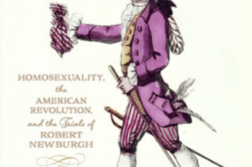THERE WERE three of them. The one on the left was a macho boy, all muscles and cool hair. On the right, linking arms with him, was a petite, girly boy, camping it up and twirling a parasol. Trailing slightly behind them came a third, gender neutral. They were Cuba’s new gay liberation vanguard.
I’d been looking for Gay Havana and this was as much as I’d found, these three twenty-something boys out for a bit of afternoon fun in La Habana Vieja (Old Havana). Some of the locals paused for a second glance, but on the whole the trio didn’t excite much interest for a country as homophobic and macho as Cuba can sometimes be.
In pre-revolutionary times, Cuba was known to tolerate maricones—up to a point. There were a few gay bars in the larger population centers, often with appropriate names like the Dirty Dick. Homosexuality was classified with prostitution and organized crime, both of which were thriving industries at the time, however illegal.
By the late 1950s, when Fidel Castro and his guerrilleros came to power, homosexuality was viewed as a form of capitalist decadence at best and counter-revolutionary deviance at worst. Simply put, GLBT people weren’t welcome to join in the revolution. Little wonder, for it was a revolution whose prevailing ethos was machismo, and one which soon came to be marked by a close alliance with the USSR, another regime fostering openly hostile attitudes and policies toward gay people.
As the 1960s wore on, the climate only worsened. Reinaldo Arenas, a Cuban author whose most famous book is the memoir Before Night Falls (1993), wrote about the perils of being a gay Cubano in Pentagonía (1994), his “secret history of Cuba,” before escaping to New York, where he died of AIDS in 1990. Arenas quotes Fidel Castro as having remarked in a 1965 interview that a homosexual could never be “a true Communist militant.” According to Castro, it was a matter of nature clashing with politics.





